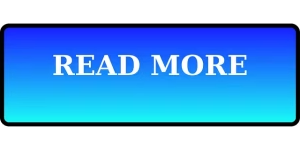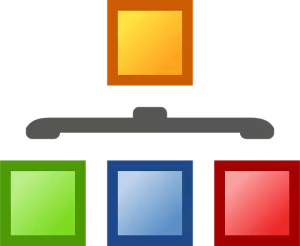In the world of web design, few topics are debated as intensely as the color of a call to action (CTA) button. You have likely heard the stories, maybe even read the famous case study about a red button outperforming a green one, leading many to declare red the champion of conversion. This has created a persistent myth: that there is one, single, perfect button color that will solve all your conversion problems.
Most color experts will agree that there is no single best color to use for a button. The effectiveness of a button is not about finding a magic color. Instead, it is about a combination of factors: psychology, branding, and most importantly, how much that button stands out from the rest of the page.
This article will break down these elements. We will explore how CTA button colors affect conversion rates by looking at the science and strategy behind making a choice that works for you. The right button color is not about magic; it is about smart design.
The Psychology Behind Your Button Color

Before we choose a button color, we must understand that colors carry meaning. People have built associations with different colors over their entire lives, and these feelings can influence their actions. This is a starting point for understanding your user, not a strict set of rules.
- Green: This color often means “go,” “success,” and “nature.” It can feel reassuring and positive. Many websites use a green button color for actions like “Sign Up Free” or “Add to Cart” because it feels like a safe, forward-moving choice.
- Red: Red is a powerful color that signals “urgency,” “stop,” or “error,” but also “passion.” It grabs attention instantly. While it can be very effective for limited time offers to create urgency, using this button color in the wrong place can feel alarming.
- Orange: This color feels energetic, enthusiastic, and friendly. It is often used to create a sense of fun and action. Because it is a mix of aggressive red and cheerful yellow, it stands out without feeling as alarming as pure red. The right orange button color can be very effective.
- Blue: Blue is the color of trust, security, and professionalism. It is one of the most common colors used by banks and tech companies because it makes people feel safe. A blue button color can signal that the action is secure and trustworthy.
Remember, the feeling a button color gives a user is just one piece of the puzzle. The most important factor is what happens next.
Why Standing Out is More Important Than Color

Have you ever looked at a picture where one thing is in bright color and everything else is in black and white? Your eye goes right to the colored object. This is called the Isolation Effect, and it is the single most important concept for choosing a button color. The goal is to make your button the most noticeable thing on the screen.
This is achieved through contrast. Contrast is simply the difference between two colors. A light yellow button on a white background has low contrast and is hard to see. A bright orange button on a white background has high contrast and is easy to see.
To make sure enough people can see and use your button, designers follow the Web Content Accessibility Guidelines (WCAG). These guidelines suggest that a button should have a contrast ratio of at least 3:1 against its background. This ensures that people with visual impairments can still clearly see it. A button that people cannot see is a button they cannot click. Therefore, a high contrast button color is more critical to success than the specific hue you choose. The best button color is a visible button color.
Your Button Color Must Match Your Brand

Imagine a very serious, professional law firm’s website. Now, picture a bright pink, bubbly “Contact Us” button. It feels wrong, does not it? That feeling is called cognitive dissonance. It happens when something does not match our expectations, and it can break trust.
Your button color must feel like it belongs to your brand such as the red and white for Coca-Cola. It should fit within your website’s overall color scheme and feel intentional. This does not mean it has to be the same color as your logo. Often, the best button color is an accent color, one that is used sparingly throughout your site to draw attention to important actions.
Think about your audience as well. The colors that appeal to a young, trendy audience might be different from those that appeal to an older, more conservative group. The context of your brand and your audience is a critical filter for deciding on the right button color. An inconsistent button color can confuse users and hurt conversions.
The Only Way to Know for Sure: Testing
So, with all these factors, how do you find the best button color for your website? You test it.
A/B testing is a simple experiment. You create two versions of the same page, but with one difference. In our case, it would be the button color. Version A might have a blue button, and Version B might have a green button. You show Version A to half of your visitors and Version B to the other half. Then, you measure which button gets more clicks.
The famous case study where a red button beat a green one is a perfect example of A/B testing. But the lesson from that test was not that “red is the best color.” The real lesson was that for that company, with that specific page design and that audience, the red button color worked better. Your results could be completely different.
The only way to know for sure is to run your own tests. Tools like Google Optimize, VWO, and Optimizely make this process straightforward. Do not guess what button color will work best. Use data to make an informed decision.
A Simple Plan for Choosing Your Button Color
Feeling overwhelmed? Do not be. Here is a simple, step by step framework for making a smart choice about your button color.
- Look at Your Brand Colors: Identify the main colors you use for your brand. Find a bright, energetic accent color in your palette.
- Check Your Background: See what color the background is where your button will be placed.
- Find High Contrast Options: Choose two or three color options that have a high contrast (at least 3:1) with the background. Use an online contrast checker to be sure.
- Think About the Action: From your list of high contrast colors, which one best matches the feeling of the action you want the user to take? A green button color for a free download? An orange button color for an exciting purchase?
- Test Your Choices: Run an A/B test between your top two choices to see which one your actual users prefer. The data will give you a clear winner. This process ensures your final button color is based on performance, not just opinion.
Conclusion: Context and Contrast Over Color
If you remember only two things from this article, let them be contrast and context. The quest for the perfect call to action button is not a search for a single magic color. It is a strategic design choice.
The best button color is one that stands out from the page, feels consistent with your brand, and guides the user toward an action. Stop asking “What is the best button color?” and start asking, “What is the most visible and persuasive button color for my audience, on my page?” By following a framework of testing and focusing on visibility, you can choose a button color that genuinely improves your conversion rates.











